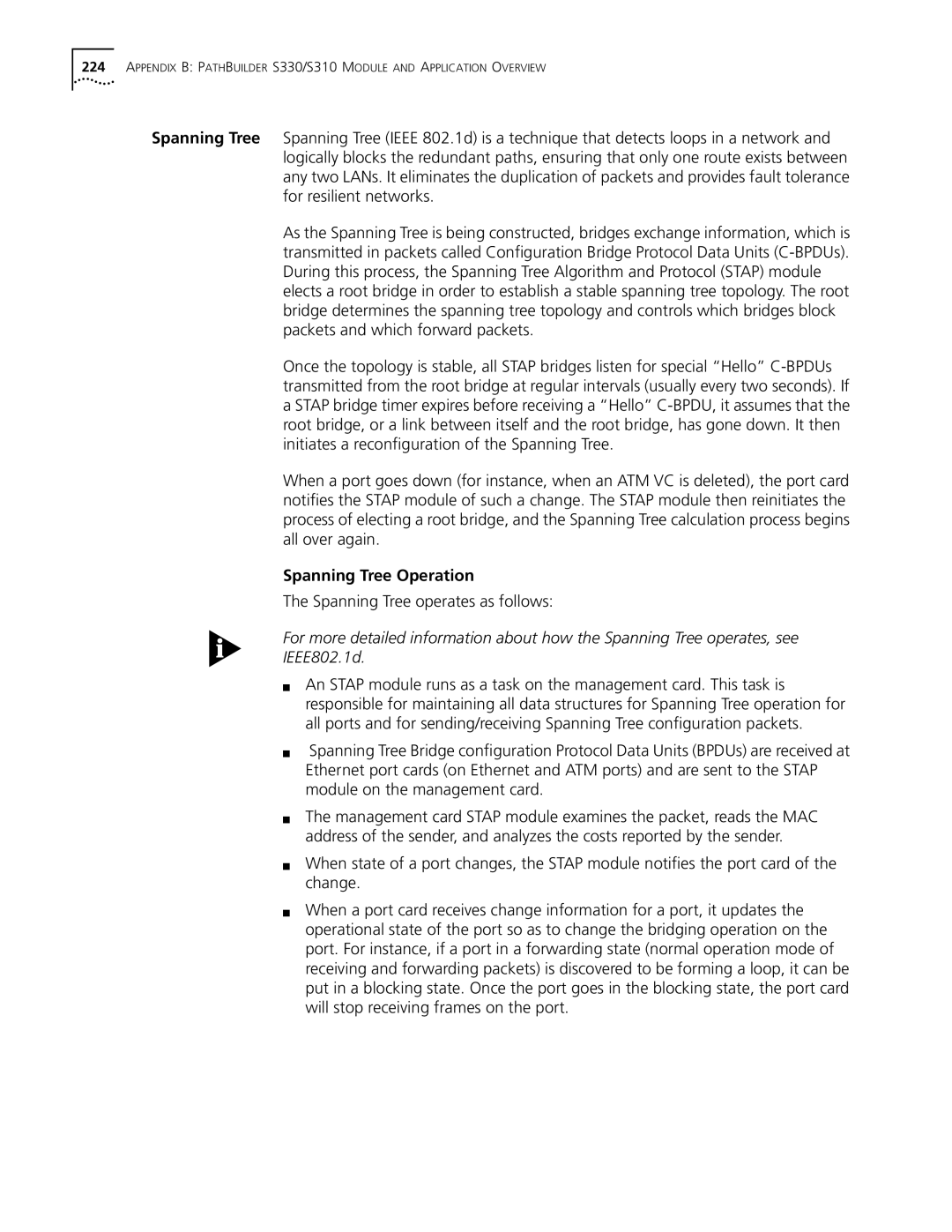
224APPENDIX B: PATHBUILDER S330/S310 MODULE AND APPLICATION OVERVIEW
Spanning Tree Spanning Tree (IEEE 802.1d) is a technique that detects loops in a network and logically blocks the redundant paths, ensuring that only one route exists between any two LANs. It eliminates the duplication of packets and provides fault tolerance for resilient networks.
As the Spanning Tree is being constructed, bridges exchange information, which is transmitted in packets called Configuration Bridge Protocol Data Units
Once the topology is stable, all STAP bridges listen for special “Hello”
When a port goes down (for instance, when an ATM VC is deleted), the port card notifies the STAP module of such a change. The STAP module then reinitiates the process of electing a root bridge, and the Spanning Tree calculation process begins all over again.
Spanning Tree Operation
The Spanning Tree operates as follows:
For more detailed information about how the Spanning Tree operates, see
IEEE802.1d.
■An STAP module runs as a task on the management card. This task is responsible for maintaining all data structures for Spanning Tree operation for all ports and for sending/receiving Spanning Tree configuration packets.
■Spanning Tree Bridge configuration Protocol Data Units (BPDUs) are received at Ethernet port cards (on Ethernet and ATM ports) and are sent to the STAP module on the management card.
■The management card STAP module examines the packet, reads the MAC address of the sender, and analyzes the costs reported by the sender.
■When state of a port changes, the STAP module notifies the port card of the change.
■When a port card receives change information for a port, it updates the operational state of the port so as to change the bridging operation on the port. For instance, if a port in a forwarding state (normal operation mode of receiving and forwarding packets) is discovered to be forming a loop, it can be put in a blocking state. Once the port goes in the blocking state, the port card will stop receiving frames on the port.
